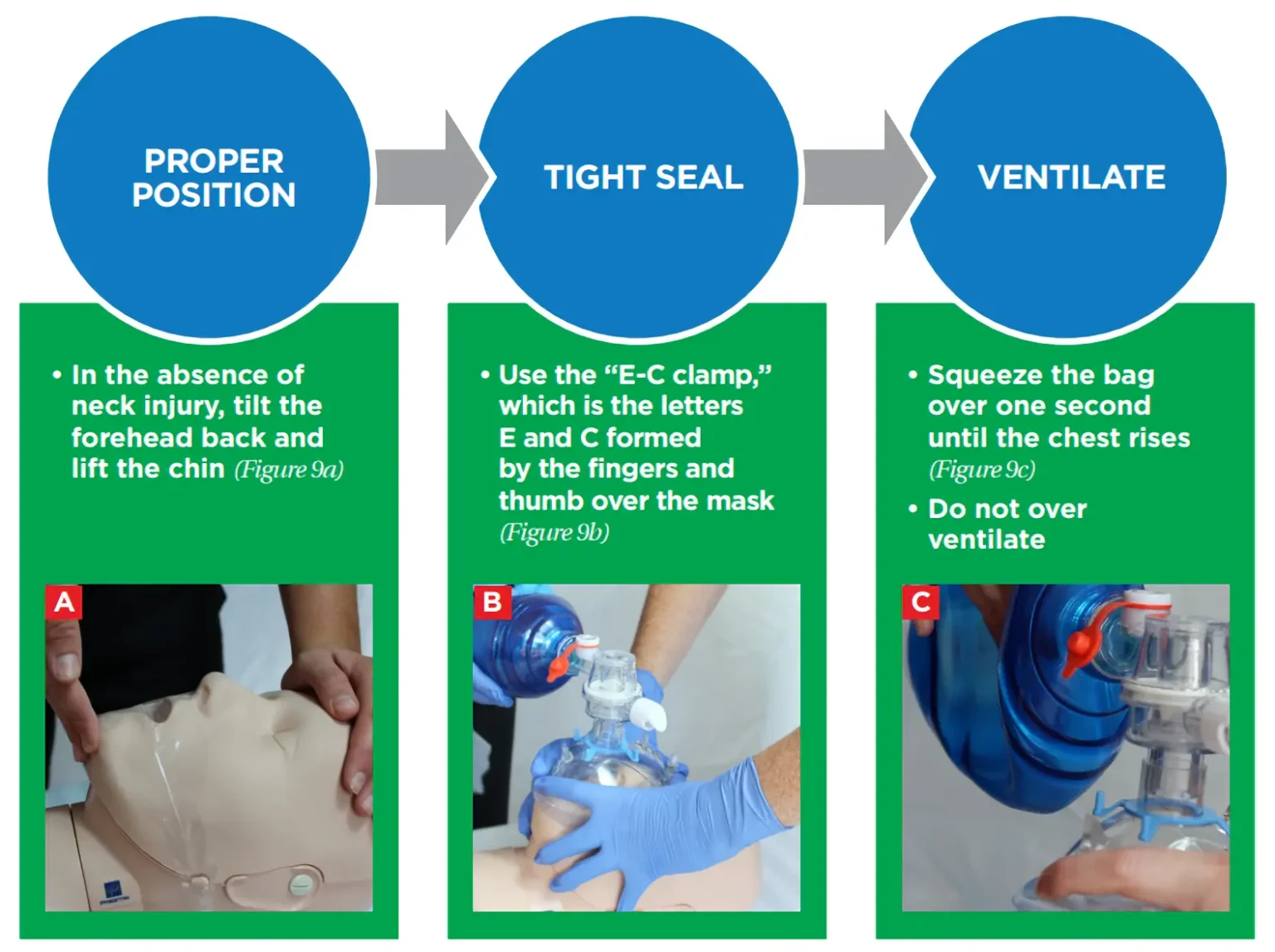Your cart is currently empty!
When performed appropriately, bag-mask ventilation is an important intervention in PALS. Proper use requires proper fit: the child or the infant’s mouth and nose should be covered tightly, but not the eyes. When possible, use a clear mask since it will allow you to see the color of their lips and the presence of condensation in the mask indicating exhalation.
The two most common types of bag-masks are self-inflating and flow-inflating. While a self-inflating bag-mask should be the first choice in resuscitations, it should not be used in children or infants who are breathing spontaneously. Flow-inflating bag-masks, on the other hand, require more training and experience to operate properly as the provider must simultaneously manage gas flow, suitable mask seal, individual’s neck position, and proper tidal volume. The minimum size bag should be 450 mL for infants and young and/or small children. Older children may require a 1000 mL volume bag. Proper ventilation is of utmost importance as insufficient ventilation leads to respiratory acidosis.
